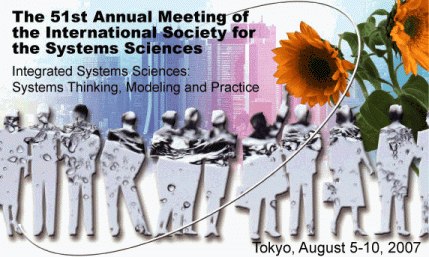Software like a courteous butler – Issues of Localization under Cultural Diversity
Keywords:
system architecture, design patterns, software-intensive systems, dichotomic alternativesAbstract
The pervasiveness of the Information and Communications Technologies (ICT) result in a tremendous amount of embedded software. Together with the global markets and economic necessities this requires software products to be used in many different countries, bringing many more people into direct (often unexpected) contact with computerized interfaces. These people expect that the software product not only ’speaks their language’ but that it also shows a behaviour which is compatible with their cultural expectations and preconditions. They expect reactions from the software like an "intuitive, courteous butler". This involves much more that a pure language translation: it implies the transfer of the software product into another culture taking into account all aspects of cultural discrepancies. We speak of localization [Ishida-05]. With respect to the necessary adaptations [Collins-02] [Chroust-00g] [Miller-04] we identify seven layers of localization of increasing cultural dependency and sensitivity ranging from ’Technological Infrastructure’, e.g. providing for the coding of special national characters, to the ’Cultural Layer’ catering for highly complex cultural traditions and expectations like taboos and social ranking. We will only discuss the topmost three so-called socio-cultural levels (Business Conventions and Practices, Transactions, and Culture) describing essential software related instances of localization. We give examples of necessary adaptations of software on the different levels and explain them with the help of Hampden&Trompenaars’s six Cultural Dimensions [Hampden-00] and/or Hofstede&Hofstede’s five Cultural Dispositions [Hofstede-05]. We follow with a classification of the various levels of cultural (in)sensibility a designer of such computer system can exhibit. Some amusing, disappointing or catastrophic consequences of cultural mismatch and some ideas on future remedies close the paper. References [Chroust-00g] CHROUST, G. Internationalization is more than Language Translation! in: Hofer, S., Beneder, M. (eds.): IDIMT-2000, 8th Interdisciplinary Information Management Talks, Trauner, Linz, pp. 431–440. [Collins-02] COLLINS, R. W. Software Localization for Internet Software: Issues and Methods IEEE Software March/April 2002 (Vol. 19, No. 2), pp. 74–80. [Hampden-00] HAMPDEN-TURNER, C. , F. TROMPENAARS Building Cross-Cultural Competence - How to Create Wealth from Conflicting Values Yale Univ. Press 2000. [Hofstede-05] HOFSTEDE, G. , G. J. HOFSTEDE Cultures and Organsizations - Software of the Mind McGraw-Hill, NY 2005. [Ishida-05] ISHIDA, R. , S. MILLER Localization vs. Internationalization http://www.w3.org/International/questions/qa-i18n; [Jan 2005]. [Miller-04] MILLER, C.A, (ed.) Human-Computer Etiquette: Managing Expectations with Intentional Agents Comm. ACM vol. 47, No. 4.Published
2007-07-31
How to Cite
Chroust, G. (2007). Software like a courteous butler – Issues of Localization under Cultural Diversity. Proceedings of the 51st Annual Meeting of the ISSS - 2007, Tokyo, Japan, 51(2). Retrieved from https://journals.isss.org/index.php/proceedings51st/article/view/569
Issue
Section
Information Systems Design and Information Technology

